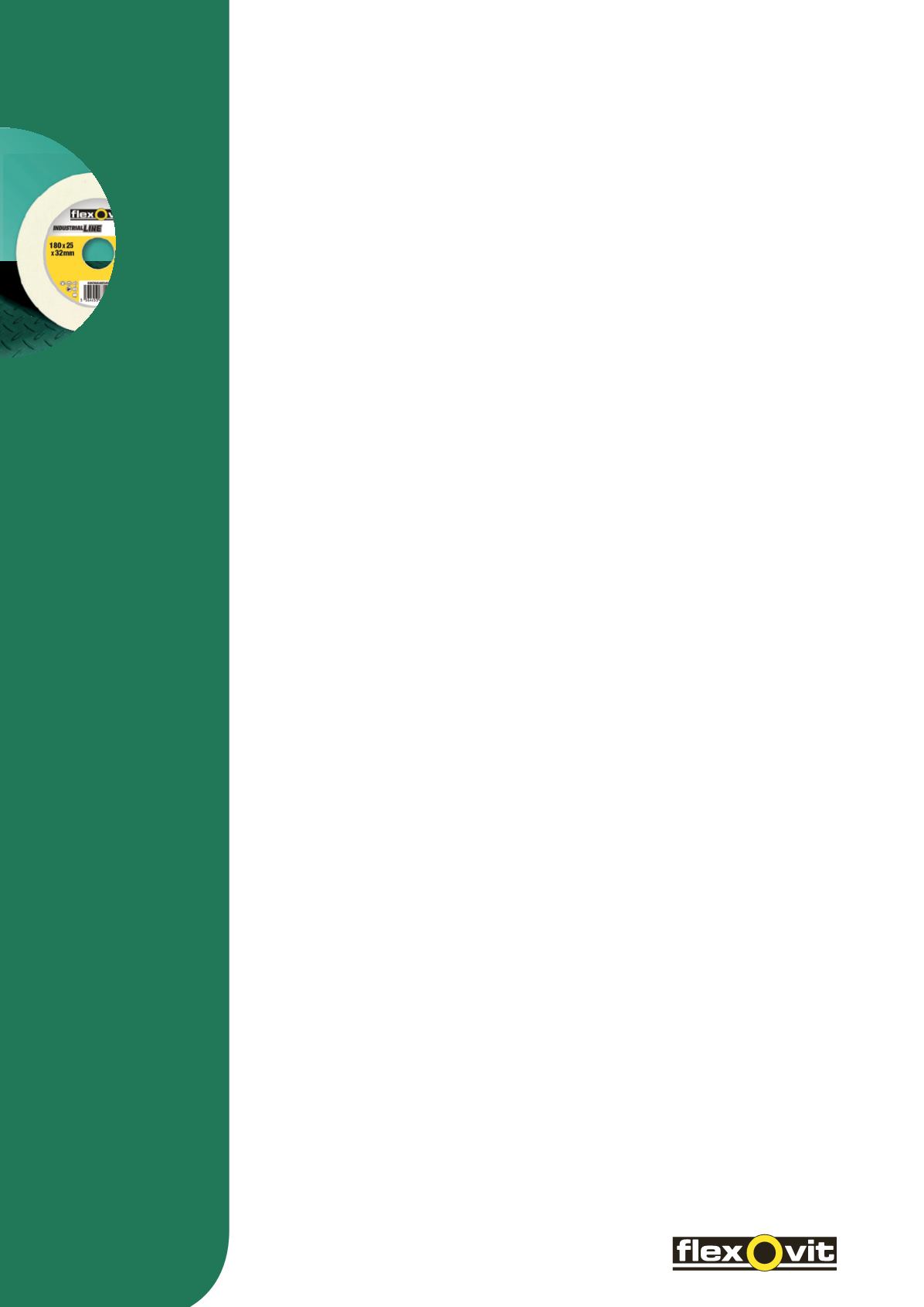

BONDED
ABRASIVES
238
SAFETY IN THE STORAGE & USE OF GRINDING WHEELS
Stringent safety standards are maintained throughout the manufacture of Flexovit Grinding Wheels. To reduce
the risk of accidents further, the law requires that certain basic precautions are taken in the storage and use
of abrasive wheels.
RECEIPT
On receipt, grinding wheels should be thoroughly examined to see if they show any signs of damage, such
as chips, cracks or discolouration. Damaged wheels must not be used.
HANDLING
Any mishandling that results in the wheel being subjected to any shock loading can damage all grinding wheels.
This can occur if the wheel is inadvertently dropped, knocked over or banged against any other object.
This is equally true if the wheel is secured on a pallet, which has been dropped heavily from a forklift truck.
Any grinding wheel subjected to such mishandling should be carefully examined for signs of damage. If in any
doubt – do not use.
STORAGE
Small wheels up to 80mm diameter, together with cones, plugs, mounted points and wheels may be stored in
suitable bins, drawers or boxes. Type 02 cylinder wheels, type 06 straight cup 04 wheels, type 12 dish wheels
and type 13 saucer wheels should normally be stacked on flat sides with cushioning material between them.
Thick rim and hard grade cylinder and straight cup wheels may be stored on their periphery as for plain wheels.
Soft grade, straight cup wheels, and all type 11 taper cup wheels, should be stored base to base and rim to rim,
to prevent chipping of edges and cracking of walls. Thin plain wheels, such as cutting off wheels or saw
sharpening wheels should be stacked on a flat surface of steel, or similar rigid material. Other plain or shaped
wheels of appreciable thickness, are best supported on their periphery in racks. The racks should provide
cushioned, two point, cradle support to prevent the wheels from rolling.
STORAGE CONDITIONS
During storage, grinding wheels must not be subjected to:
• Exposure to humidity, water or other liquids
• Freezing temperatures
• Any temperature low enough to cause the formation of condensation on the wheels when moving from storage
to an area of high temperature
SHELF LIFE OF RESINOID & VITRIFIED BONDED WHEELS
The outer surfaces of certain organically bonded wheels may be affected by oxidation if they are stored for long
periods. These types of wheel should not be stored for more than three years and proper stock control should
ensure that older wheels are used first. In use, a three year old Resinoid product will act considerably softer than
a brand new wheel (wheel will wear away more quickly).
The glass bonding system used in vitrified wheels is very inert and generally only attacked by certain acids.
Cold temperatures can result in a vitrified wheel cracking if wheels are put away wet and are subjected to
freezing temperatures. It must be remembered that the longer a product is in storage the chances of it becoming
damaged increases. Provided vitrified wheels are stored correctly, thoroughly examined and mounted correctly
they will last for many years.
RING TEST
The ring test depends upon the damping characteristics of a cracked wheel to alter the sound emitted
when it is lightly tapped. The test is applicable only to vitrified bonded wheels.
To perform the ring test; support the wheel gently with a finger through the bore section. Using a light non-metallic
implement (a file handle is ideal), gently tap the wheel about 45° each side of the vertical centre line. Rotate
the wheel 45° and repeat the test.
The sound an undamaged wheel will omit a clear tone. If cracked, there will be a dead dull sound – not a clear
ring – and the wheel should NOT be used. The ring test should be carried out in a place where the ring can
easily be heard.
TECHNICAL INFORMATION


















